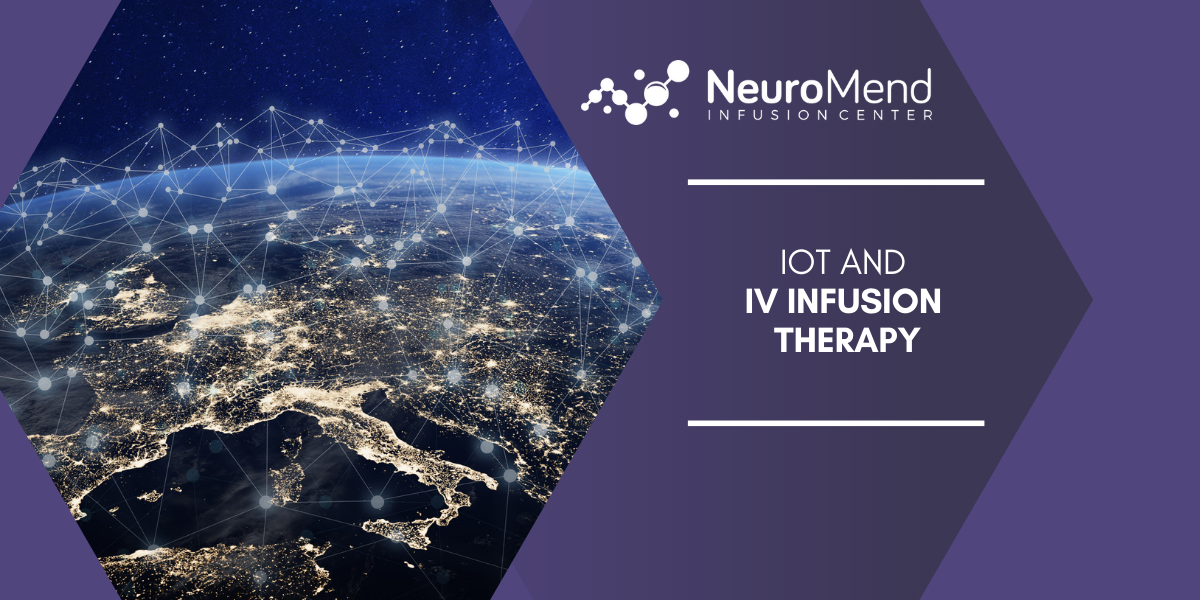
The Internet of Things (IoT) is a term that is used to describe the growing trend of devices being connected to the internet. This includes everything from cell phones and cars, to refrigerators and door locks. The healthcare industry has been one of the early adopters of IoT technology, and there are many ways in which it can be used to improve patient care. In this blog, we will discuss how IoT is being used in IV infusion therapy, and some of the benefits that it offers!
What is the IoT?
The Internet of Things (IoT) is a network for connecting and exchanging data with physical objects by connecting them with sensors, software and other technologies. With the arrival of super-cheap computer chips and an increasingly wireless world, it's possible to turn anything, from something as small as a pill to something as big as an airplane, into a part of the IoT.
The Internet of Things is making the fabric of our world around us smarter and more responsive. It's merging digital devices with physical objects, enabling them to communicate real-time data without involving human beings! Pretty much any physical object can be transformed into an IoT device. If it can be connected to the internet, it can be controlled or used to communicate information. These "things" can be anything from ordinary household objects to sophisticated industrial equipment.
A multitude of industries are seeing the benefits of this emerging connected system, including marketing, engineering, online RX, remote IT, automation, business intelligence, data intelligence, Amazon sales and so much more.
There are already more connected things than people in the world! The IoT is already a major part of our lives, with 12.3 (2021) billion connected devices today and experts predicting that number will grow to over 125 billion by 2030.
How is IoT used in Healthcare?
The majority of patients currently interact with their doctor during an in-person visit, where they are diagnosed, treated or instructed on further procedures. This process is effective in cases of common illness, but does it work as well for patients with chronic conditions?
Applying IoT in healthcare could help alleviate challenges for individuals who suffer from chronic illnesses or conditions, such as Crohn's disease, chronic migraines, depression and PTSD, who need constant monitoring or have limited access to medical care.
Existing sensing technologies in healthcare are used to monitor medical indicators or track real-time data. Some of these include wearable devices such as pulse oximeters, blood pressure watches and fitness watches.
With the help of data engineering, the existing technology used in healthcare could be apart of a connected system that reaches all over the world. Healthcare adopting the use of the IoT could be used for remote monitoring and to improve healthcare operations by streamlining asynchronous interactions between patients, professionals and even smart hospitals themselves, like our friends at Senderra!
When nearly every object in our lives is connected, the IoT will allow us to do things in healthcare that were once impossible. For example: A new study found an implantable sensor designed for diabetes patients can wirelessly transmit real-time data about their blood sugar levels without any need of physical contact or proximity between patient and monitor. Another innovation allows people living with Parkinson’s disease at home through remote care technology which helps them manage robotic movements while maintaining independence as they continue daily activities.
How does the IOT Improve IV Infusion Therapy?
Another way that the IoT is improving healthcare is for IV infusion therapy, like using a computer to control the rate at which medication is administered to a patient through an intravenous line.
IoT can be used to improve IV infusion therapy in several ways. For example, it can be used to track patients' therapies in real time. IoT can also be used to create custom treatment plans for each patient. This helps to ensure that patients receive the most effective treatment possible while detecting errors in medication delivery, improving patient safety.
Another new innovation proposes a drip monitoring and control device that fits on the existing intravenous (IV) infusion setup. Doctors and nurses typically use their experience to estimate the time required for a drip bottle to be empty and for setting up the drip rate, allowing the potential of human error. With the IoT, there is now a proposed monitoring and control platform for IV infusion setups. This enables doctors and nurses to monitor, as well as control, the IV infusion setup wirelessly while keeping costs low and making the device highly reliable.
Overall, IoT has the potential to revolutionize healthcare and IV infusion therapy. It can help to improve patient care and safety, reducing costs, streamlining workflow, all while driving environmental sustainability!
ABOUT NEUROMEND INFUSION CENTER
![]() We are an Evidence-Based Center of Excellence and the leading provider of Ketamine Infusions, IV Infusions and Ketamine Consulting Services for Ketamine Clinics and IV Therapy Clinics.
We are an Evidence-Based Center of Excellence and the leading provider of Ketamine Infusions, IV Infusions and Ketamine Consulting Services for Ketamine Clinics and IV Therapy Clinics.
We Provide Effective Treatment For The Following Conditions: Major Depressive Disorders, Post-traumatic Stress Disorder (PTSD), Bipolar Depression, Obsessive Compulsive Disorder (OCD), Chronic Migraines, Severe Anxiety, Fibromyalgia and Chronic Pain Syndromes











